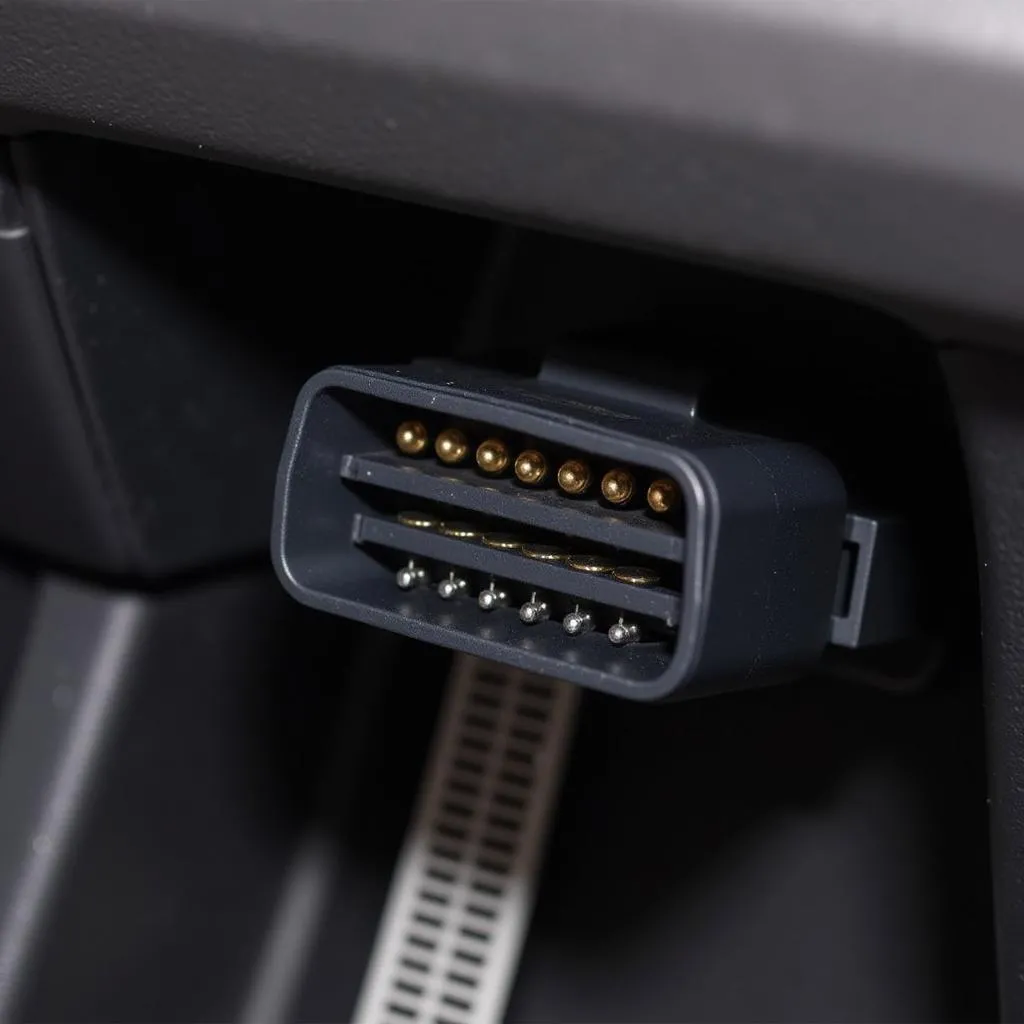OBD and EOBD are terms thrown around a lot in the automotive world, often leaving car owners scratching their heads. These acronyms stand for On-Board Diagnostics and European On-Board Diagnostics, respectively. Both systems are designed to monitor your car’s engine and emissions systems, acting as a direct line of communication between your car’s brain and your mechanic.
But what exactly are the differences between OBD and EOBD? And how do these systems benefit you as a car owner? This comprehensive guide delves into the heart of OBD vs. EOBD, equipping you with the knowledge to understand your car’s health better.
Demystifying OBD: The Foundation of Car Diagnostics
Imagine a black box recording your car’s every move—that’s essentially what OBD is. This system utilizes a standardized connector, typically located under the dashboard on the driver’s side, to access a treasure trove of data about your vehicle’s performance.
From monitoring engine speed and coolant temperature to tracking fuel efficiency and emissions levels, OBD provides a snapshot of your car’s vital signs. When a problem arises, the system triggers a “check engine” light and stores a corresponding Diagnostic Trouble Code (DTC) in its memory.
 OBD connector under car dashboard
OBD connector under car dashboard
EOBD: The European Evolution of On-Board Diagnostics
While OBD laid the groundwork for car diagnostics, EOBD emerged as a more stringent and standardized system. Introduced in Europe in 2001, EOBD focuses specifically on monitoring and reducing harmful exhaust emissions.
Essentially, EOBD builds upon the foundation of OBD, incorporating additional sensors and stricter emission control protocols. For instance, EOBD mandates monitoring the catalytic converter’s efficiency and detecting malfunctions in the evaporative emissions system, components crucial for minimizing a vehicle’s environmental impact.
OBD vs. EOBD: Key Differences
While both systems share the goal of monitoring your car’s health, several key distinctions set OBD and EOBD apart:
- Geographical Origin: As the names suggest, OBD originated in the United States, while EOBD emerged as the European standard.
- Emission Standards: EOBD enforces stricter emission control regulations compared to its OBD counterpart.
- Monitoring Parameters: EOBD monitors a wider range of components and systems, particularly those related to emissions control.
- DTC Standardization: EOBD utilizes a more standardized set of DTCs, facilitating easier and more accurate diagnostics across different car makes and models.
The Benefits of OBD and EOBD for Car Owners
These diagnostic systems aren’t just for mechanics—they offer a multitude of benefits for everyday car owners:
- Early Problem Detection: OBD and EOBD act as early warning systems, notifying you of potential issues before they escalate into major repairs.
- Reduced Repair Costs: By identifying problems early on, these systems can save you significant money on costly repairs down the line.
- Improved Fuel Efficiency: Monitoring fuel system parameters allows for optimization, leading to improved fuel economy and reduced emissions.
- Enhanced Vehicle Safety: By keeping tabs on critical engine components, OBD and EOBD contribute to a safer driving experience.
OBD and EOBD: The Future of Car Diagnostics
As technology continues to advance, so too will OBD and EOBD systems. With the rise of electric vehicles and autonomous driving, these diagnostic tools will play an even more crucial role in ensuring optimal vehicle performance, safety, and environmental friendliness.
Conclusion
Understanding the differences between OBD and EOBD empowers you as a car owner to take charge of your vehicle’s health. By recognizing the significance of these diagnostic systems, you can proactively address potential problems, save on repair costs, and ensure a smoother, safer driving experience. When your “check engine” light illuminates, remember that OBD and EOBD are your allies, providing valuable insights into your car’s inner workings.
FAQ
- Are OBD and EOBD connectors the same? Yes, both systems use a standardized 16-pin connector.
- Can I use an OBD scanner on an EOBD car? Yes, but it might not access all EOBD-specific parameters.
- What does it mean when my check engine light flashes? A flashing light typically indicates a more serious issue requiring immediate attention.
- Can I reset my check engine light myself? Yes, but it’s crucial to address the underlying issue that triggered the light in the first place.
- How often should I have my car diagnosed? It’s generally recommended to have your car diagnosed annually or as part of your regular maintenance schedule.
For any further inquiries or assistance, please reach out to our expert team via WhatsApp: +1(641)206-8880, Email: [email protected], or visit us at 276 Reock St, City of Orange, NJ 07050, United States. We’re available 24/7 to provide comprehensive support for all your car diagnostic needs.